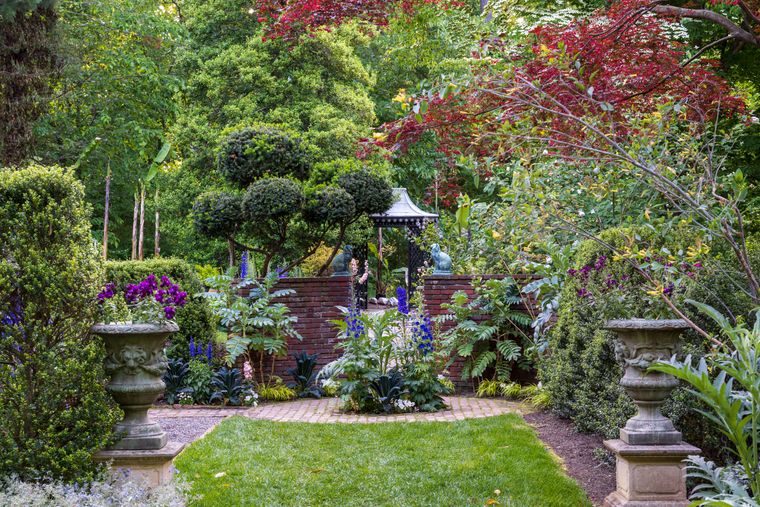

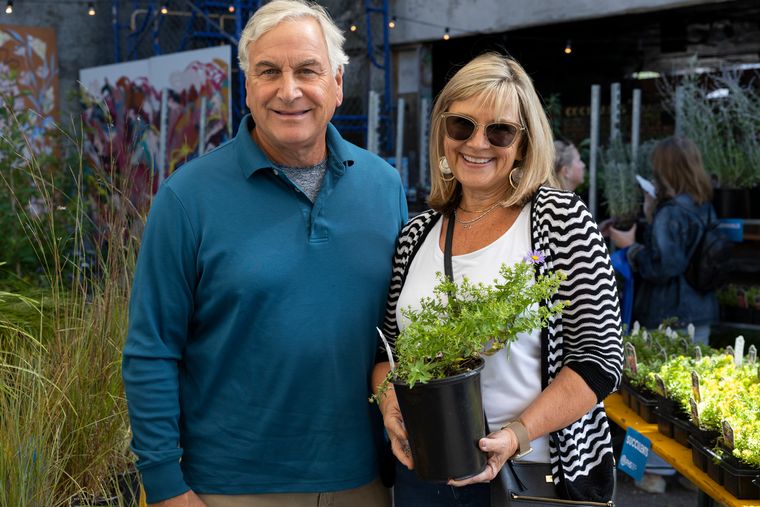
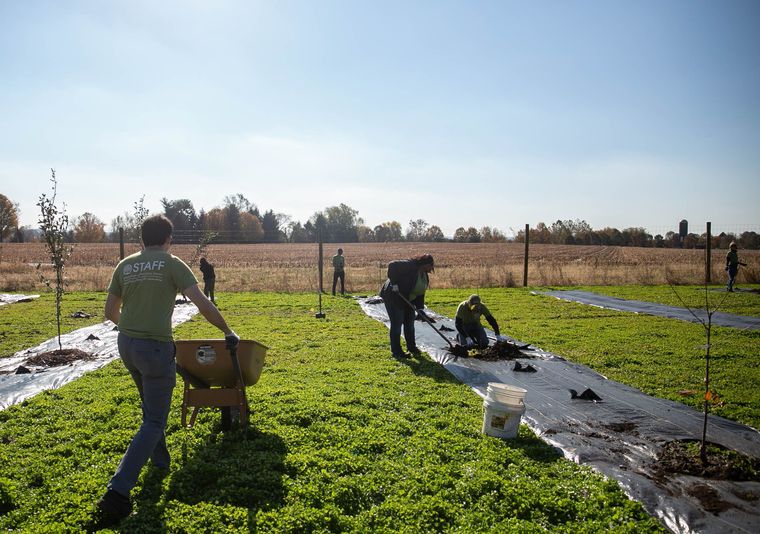
All Things Amaryllis: How to Grow, Care For, and Decorate with This Flower
plant care
seasonal tips
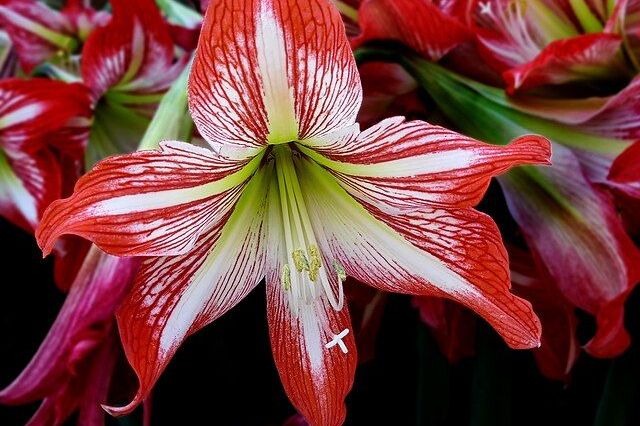
By Sally McCabe, Associate Director of Community Education
There are few sights as rewarding in the dead of winter as the towering, trumpet-shaped bloom of an Amaryllis (Hippeastrum). I keep my house FULL of them. Although they come originally from the tropical and subtropical regions of South America, this wonderful plant does just fine in my somewhat-less-than-tropical dining room (and kitchen, and bedroom, and hallway) and just about anywhere I have a window. From November through almost May, The Amaryllis explodes in bloom. Known for its dramatic red, pink, and white striped flowers. They bring color and life into homes during the holidays when most of the rest of the world is sporting shades of grey.
Let’s start with brand new bulbs, which we expect to force into bloom by Christmas, or even Thanksgiving. They make fantastic gifts, especially when you give them at that magical moment when a stem is just emerging. (I gift them but tell people to give them back when they’re done blooming so I can “recycle” them!).
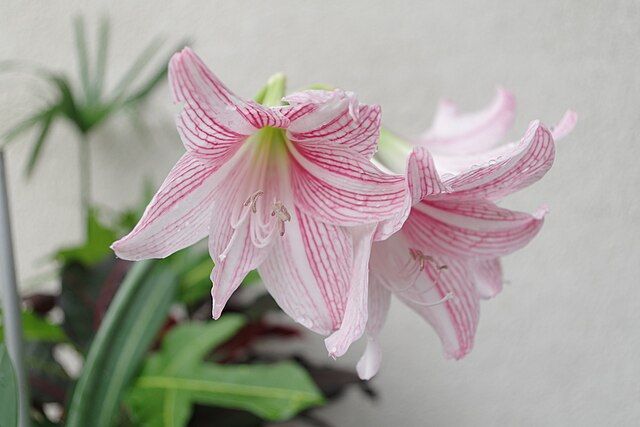
How to Grow Amaryllis for Holiday Flowering
Understanding the basics of how to grow Amaryllis indoors will help you get spectacular holiday flowers. To ensure your Amaryllis is ready for the holiday spotlight, you need to understand the simple mechanics of forcing a new bulb.
Choosing and Planting Amaryllis (Traditional Method)
Choose a quality bulb: Always select a bulb that is firm and heavy with no visible blemishes. Size matters: a larger, firm bulb (4-5 inches in diameter) will often produce multiple flower stalks, or scapes. The bigger and more unusual varieties can sell for as much as $50 and are worth every penny. I treat myself to a different one every year.
Planting: Use a high-quality, well-draining potting mix in a pot only 1-2 inches wider than the bulb itself. Amaryllis prefers a snug fit. Plant the bulb so that one-third to one-half of the bulb remains exposed above the soil line. LABEL THEM. It’s hard to remember the variety name when they are no longer blooming.
Timing: For a Christmas bloom, plant the bulb approximately 6-8 weeks before the target date.
Watering (the secret!): This is crucial. Water thoroughly once after planting to settle the soil but then hold back. Keep the soil barely moist, or even dry, until a green shoot emerges. Excess water before root establishment is the most common cause of bulb rot. This is the simple secret to how to care for Amaryllis after planting.
Sally’s Cheap and Fast Amaryllis Trick
Amaryllis kits (boxes with a bulb, pot, and peat or cocoa coir pellet) show up in box stores and supermarkets on November 1, and are available, often at reduced prices until Christmas. I just bought mine at the Giant supermarket for $8, and it’s worth every penny.
But you have to be careful and open every box before you buy. These are slightly smaller bulbs which have been out of cold storage for a long time and may have already broken dormancy right in the box, without the benefit of light, soil, water, or space.
Look for:
- No spent blooms
- A healthy stem with a bud (okay!)
- Multiple bud tips
Best Kit Varieties: 'Red Lion', 'Minerva', and 'White Christmas.'
Avoid 'Apple Blossom' after early November—they often bloom in the box.
Planting: Use the kit’s pot and soil. Keep one-third to one-half of the bulb above the soil line.
Timing: Stand back—they bloom in 2–3 weeks.
Watering: Same rules as above.
Looking for a unique, hands-on holiday experience? Treat yourself to our Holiday Wreath making class.
Watering and Fertilizing Tips for Healthy Amaryllis
This is the secret to how to care for your Amaryllis after planting: start with minimal watering and bright light.
- Once growth begins, keep soil lightly moist but never soggy.
- Allow the top 1–2 inches of soil to dry between waterings.
- Skip fertilizer during blooming—the bulb has stored all it needs.
To enjoy continuous color, stagger plantings for blooms throughout winter, or mass them for one glorious burst of color.
Amaryllis Care Guide: Getting Next Year’s Bloom
When the flowers fade, the bulb enters its next mission: rebuilding energy for next year. Amaryllis care after blooming is vital for repeat success.
Cutting the Scape:
After the last flower drops, cut the flower stalk to within an inch of the bulb. Leave the leaves—those are the photosynthesis powerhouses.
Light & Feeding:
Move the pot to your brightest window. Feed every 2–4 weeks with a balanced liquid fertilizer. Worm compost works wonders, especially for kit bulbs planted in nutrient-poor coconut coir.
Summer Vacation:
Once all danger of frost is past (and nighttime temperatures stay above 50°F), move the pot outdoors to a bright, protected spot. Continue your diligent watering and feeding schedule throughout the entire summer. I feed mine worm compost, especially the cheap bulbs that are otherwise growing in coconut coir, which doesn’t have much umph.
How to Get Amaryllis to Rebloom (The “Official” Way)
To prompt your healthy, well-fed bulb to bloom on schedule again, you must force a period of dormancy. This resting period is necessary for flower initiation
- Stop the Cycle: In late August or early September, bring the pot indoors and immediately stop all watering and feeding.
- The Big Chill: As the leaves yellow and wilt, cut them off at the base. Move the pot to a cool, dark, and dry location such as a basement or closet where the temperature remains consistently between 50°F and 60°F.
- The Wait: The bulb must rest here for at least 8-12 weeks.
- Re-Emergence: After the rest period, bring the pot out, refresh the topsoil, and begin the planting/forcing process again! 6-8 weeks later, you’ll be rewarded with your second show.
Sally’s Real-World Amaryllis Method
I take about half of mine and load them into the basement just before frosting. Sometimes they go dormant and sometimes not. The other half gets scattered around the house on windowsills and left to shift for themselves. These windowsills usually start popping into bloom in February, while the basement ones do 4-5 weeks after I pull them out of storage. Sometimes so many are blooming at once that I give them away in large bunches.
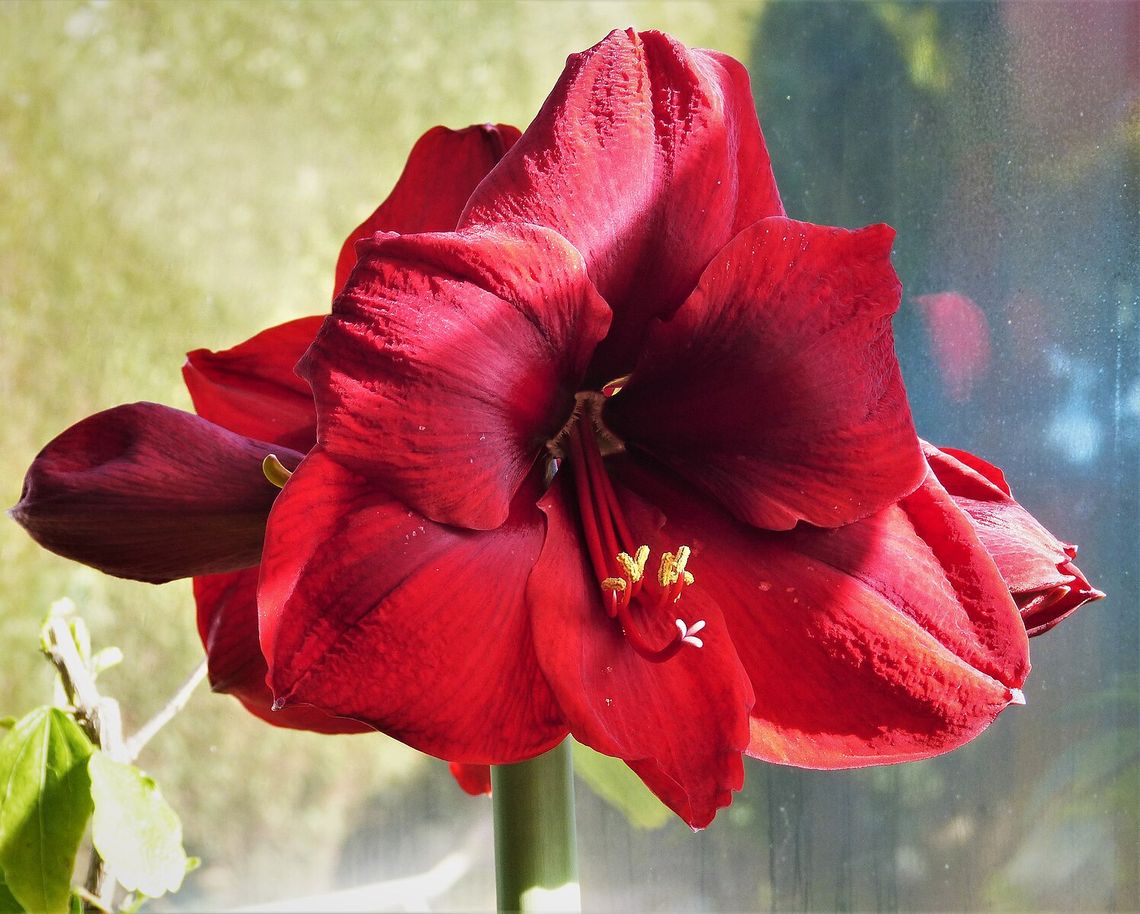
Troubleshooting Common Amaryllis Problems
Amaryllis are low-maintenance, but issues happen:
- No first bloom? Usually, overwatering = bulb rot.
- No second-year bloom? Improper dormancy.
- Flopping flower stalks? Plant deeper or use a heavier pot.
- Pets? Don’t let cats eat the leaves or flowers—they are toxic.
Why Isn’t My Amaryllis Blooming?
If autumn arrives and your bulb never went dormant, you may need tough love to get a winter bloom.
- Stop watering immediately.
- Cut back healthy foliage.
- Move bulb to a cool, dark area for at least 8 weeks.
Dormancy triggers flower bud initiation, so this step can’t be skipped.
Hardy Amaryllis Indoors
Amaryllis belladonna, Nerine lilies (Nerine Bowdenii ) and Lycoris squamigera, are Amaryllis-like and interchangeably referred to as Naked Ladies and Spider Lilies. Amaryllis belladonna is hardy in zones 7–10, and Lycoris squamigera is hardy in zones 5–9. They have a reverse life cycle to regular Amaryllis, in that they put up leaves first after dormancy, then lose their leaves and put up naked spikes with flowers late in the summer. I’m bringing my nerines and belladonnas in for the winter and will report back on them next year.
Final Thoughts on Amaryllis
With the right care and patience, your Amaryllis can bring color, warmth, and elegance to your home year after year. Give that bulb initial care, a summer vacation, and a winter nap; you will be rewarded with an elegant encore performance. Visit your local garden center for quality amaryllis bulbs to start your own collection!


